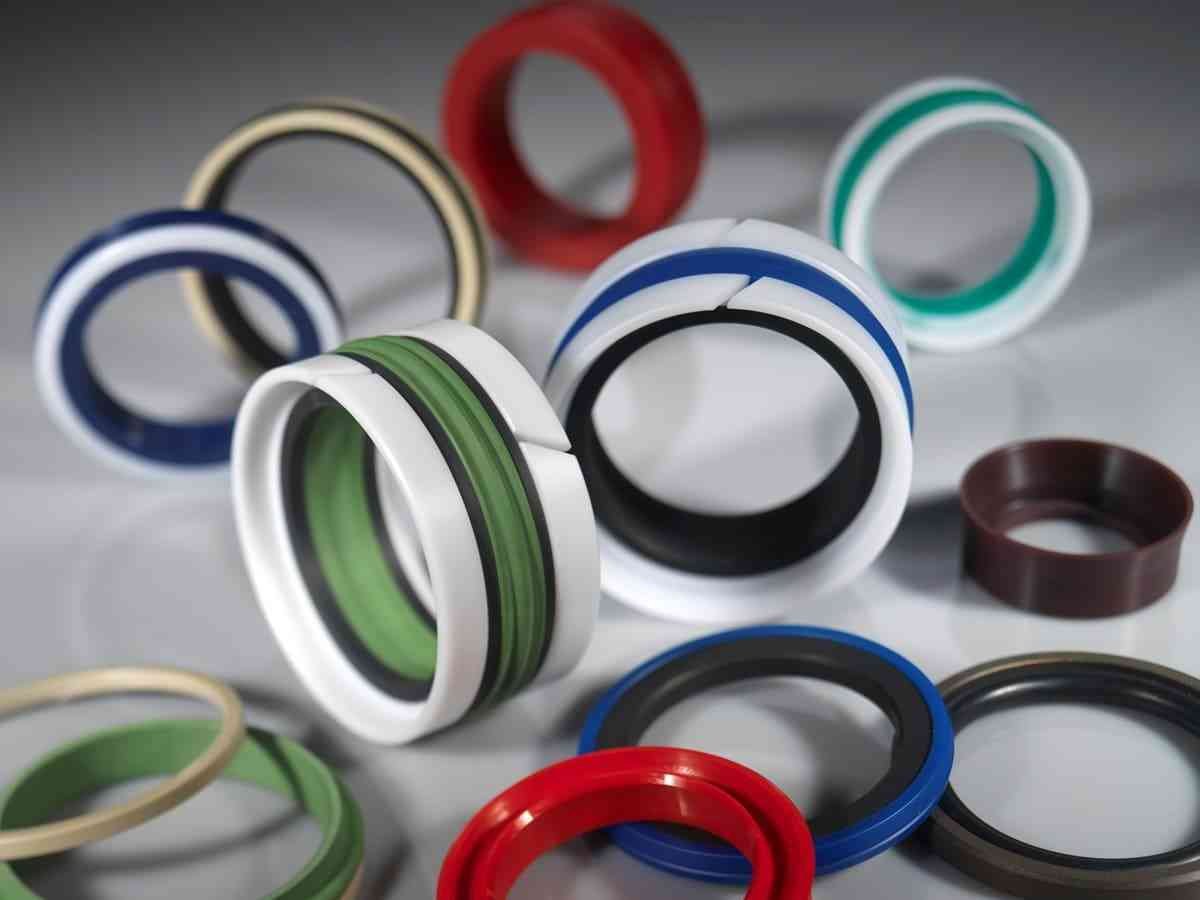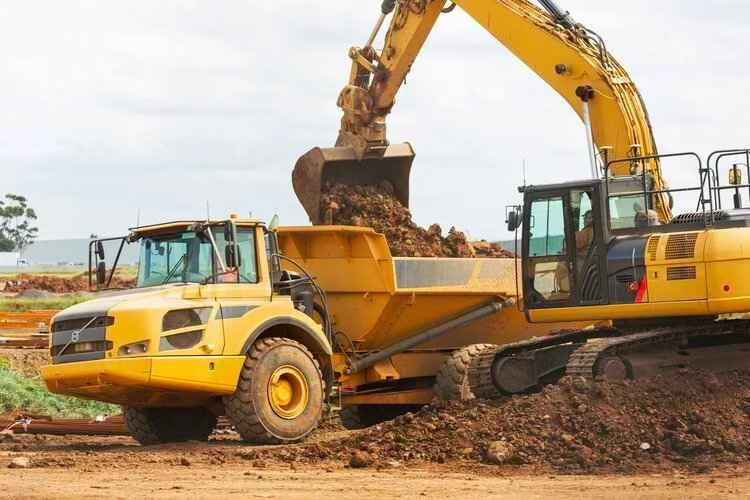Hydraulic Seals
Description of Hydraulic Seals
Hydraulic seals are fundamental components in fluid power systems, playing a critical role in maintaining the integrity and efficiency of hydraulic machinery. Hydraulic seals are high-pressure seals used in light, medium and heavy-duty hydraulic cylinders in industries.
HYDRAULIC PISTON SEAL - Pmax 250-700 BAR
HYDRAULIC WIPER SEAL - Pmax 400-700 BAR
HYDRAULIC SYMMETRICAL SEAL - Pmax 250-450 BAR
Function and Working Principle of Hydraulic Seals
Hydraulic seals work by creating a barrier between moving or stationary components in a hydraulic system to contain hydraulic fluid and prevent leakage. The working principle of hydraulic seals involves several key mechanisms:
Compression: When installed in a hydraulic system, the seal is typically compressed between two mating surfaces. This compression forces the seal material against the sealing surface, creating a tight seal that prevents hydraulic fluid from escaping.
Friction: Hydraulic seals rely on friction between the seal material and the sealing surface to maintain a secure seal. The seal material is usually made of elastomers like rubber, which have high friction coefficients. This friction helps the seal grip the mating surfaces firmly, preventing fluid leakage.
Deformation: The elastic properties of hydraulic seal materials allow them to deform under pressure and conform to irregularities in the sealing surfaces. Even if there are slight imperfections or misalignments between mating components, the seal can adjust to maintain an effective barrier against fluid leakage.
Directional Control: Depending on the specific application, hydraulic seals may also serve a directional control function. For example, piston seals and rod seals in hydraulic cylinders not only prevent fluid leakage but also help control the direction of movement of the piston or rod within the cylinder.
Material Compatibility: Hydraulic seals are designed to withstand the conditions present in hydraulic systems, including high pressure, temperature variations, and exposure to hydraulic fluids. The choice of seal material depends on factors such as operating conditions, fluid compatibility, and required durability.
In summary, hydraulic seals work by utilizing compression, friction, deformation, and material compatibility to create a reliable barrier against fluid leakage in hydraulic systems. By containing hydraulic fluid and preventing leaks, these seals help maintain the efficiency, reliability, and safety of hydraulic machinery and equipment.
Following are various cases from a hydraulic system where a combination of hydraulic seals are used to create optimum sealing effect.
Case 1: High pressure and temperature range with long operation time
Heavy construction machinery cylinders operate globally 24/7, often without proper maintenance, leading to oil contamination. Sealing systems must withstand pressures up to 60 MPa, high temperatures, and humidity. Polyurethane seals are ideal for durability, while proper geometry and materials are crucial.
Case 2: Middle pressure and temperature range with long operation time
Hydraulic systems in mobile machines typically operate at around 32 MPa with intermittent use and temperatures reaching up to 100°C. Sealing systems for these applications are similar to those described earlier but can use standard materials due to lower pressures and temperatures. The piston seal may consist of a closed ring made of 98 Sh A polyurethane with an NBR energizer. This system includes a primary seal, secondary U-cup seal, and double-acting wiper for excellent leakage performance and durability.
Case 3: Low/medium pressure and temperature range
Machines that don't require high-pressure hydraulic systems offer several advantages. Components like valves can be designed for lower loads, reducing material costs and enhancing product reliability and lifespan. These systems typically don't need continuous operation. Sealing such cylinders can be achieved without a primary or buffer seal, placing greater demands on the rod seal, which bears pressure during operation. A double lip wiper with a pressure release function is optimal for these cylinders. Standard materials for standard (ISO) glands facilitate production standardization.
CV Technik offers a range of hydraulic seals tailored to various applications. For machines not requiring high-pressure systems, their seals ensure optimal performance, reliability, and longevity. With options like double lip wipers with pressure release functions, they meet diverse sealing needs effectively. Whether it's standard or specialized seals, CV Technik provides solutions that optimize hydraulic system performance and minimize maintenance requirements.
This video from the Trelleborg shows various applications where Hydraulic seals are used.
Advantages of Hydraulic Seals
Fluid containment: Hydraulic seals prevent fluid leakage, ensuring the efficient operation of hydraulic systems.
Component protection: By sealing off components from external contaminants such as dirt, dust, and moisture, hydraulic seals help prolong the lifespan of hydraulic system components.
Enhanced performance: Properly functioning hydraulic seals contribute to improved system efficiency and performance by maintaining proper fluid pressure and preventing energy loss due to leakage.
Reduced maintenance: Effective hydraulic seals minimize the need for maintenance by preventing fluid leakage and reducing the risk of component damage.
Versatility: Hydraulic seals are available in various designs and materials to suit different applications and operating conditions, offering versatility in design and implementation.
Cost-effectiveness: By reducing fluid leakage and minimizing the risk of component damage, hydraulic seals contribute to cost savings over the lifespan of hydraulic systems through reduced maintenance and downtime.
Environmental protection: Hydraulic seals help prevent fluid contamination and minimize the environmental impact of hydraulic system operation by containing fluids within the system.
Longevity: High-quality hydraulic seals are designed to withstand the rigors of hydraulic system operation, providing long-lasting performance and reliability.
Applications of Hydraulic Seals
Automotive: Used in vehicle braking systems, power steering systems, suspension systems, and hydraulic lift mechanisms.
Aerospace: Found in aircraft landing gear, flight control systems, and hydraulic actuators.
Construction: Employed in construction equipment such as excavators, bulldozers, cranes, and loaders for hydraulic cylinders and systems.
Manufacturing: Utilized in industrial machinery for presses, injection molding machines, hydraulic presses, and metalworking equipment.
Agriculture: Used in agricultural machinery like tractors, combines, and harvesters for hydraulic steering, lifting, and control systems.
Hydraulic Seals Application Industries
-

Construction Equipments
-

Automotive Industry
-

Agricultural Equipments
-

Pumps, Motors and Gearboxes
Product Features of Hydraulic Seals
High-Pressure sealing application
Pressure up to 250 Bar / 400 Bar / 700 Bar
Shaft speed up to 0.5 - 10 m/s
Oil seal materials Composite PTFE / Elastomer / PU
Temperature range -40°C to 220°C
Various profiles are available for different applications






